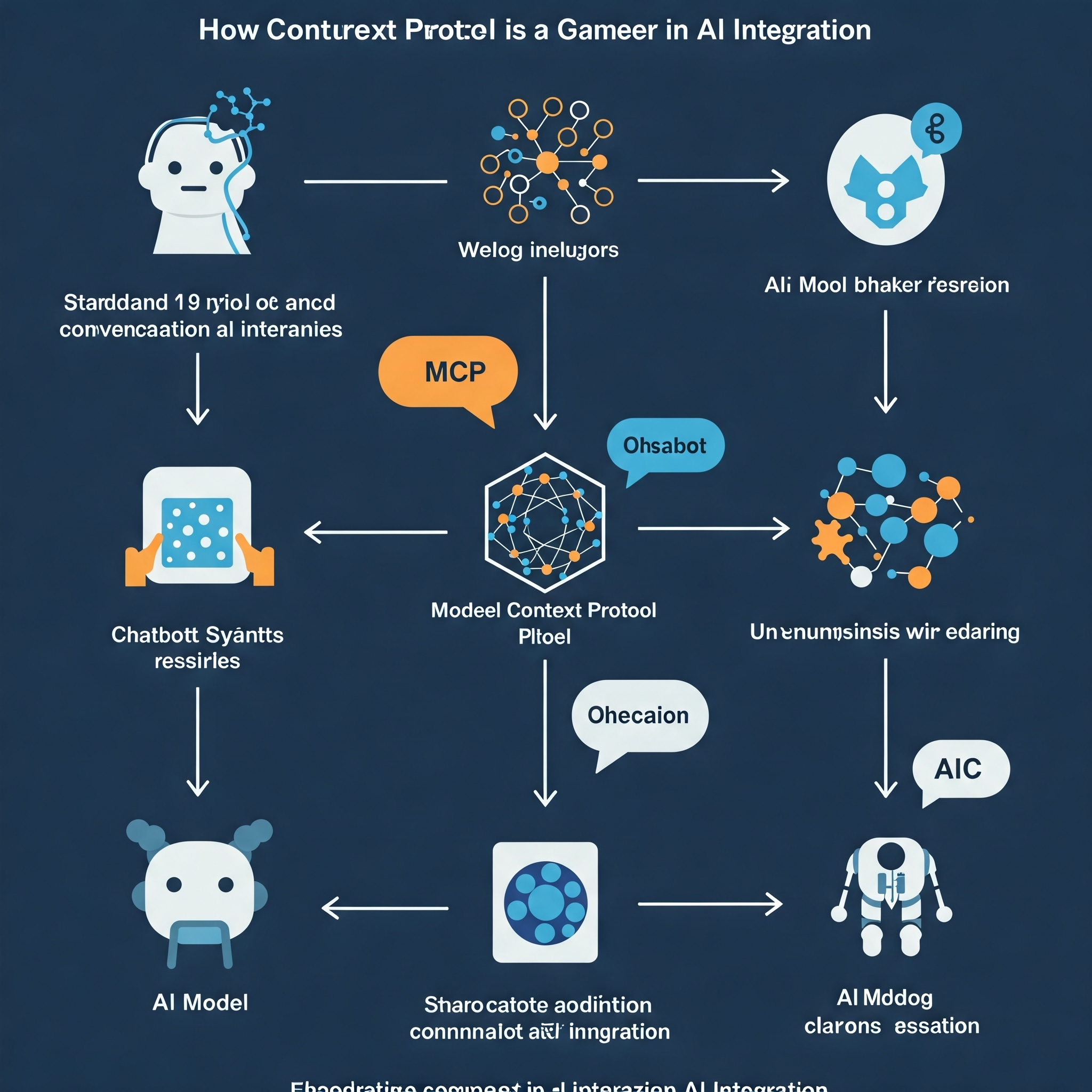How Model Context Protocol is a Game Changer in AI Integration
Introduction
In an era where artificial intelligence systems are becoming increasingly advanced and widespread, a fundamental problem arises: how to enable different AI models to collaborate effectively? The Model Context Protocol (MCP) – a standard introduced by Anthropic – solves this problem and could fundamentally change how we think about the integration of AI systems.
What Exactly is MCP?
The Model Context Protocol is an open standard whose main goal is to standardize the way different AI models and AI-powered systems communicate and exchange context. It's like a universal diplomatic language for AI – allowing different systems not only to exchange data but, more importantly, to share context, which is a deeper understanding of the processed information.
The three pillars of MCP are:
- System Integration – enabling collaboration between different AI models, regardless of the technologies used.
- Context Exchange – transmitting not only raw data but also meta-information that gives it meaning.
- Architectural Flexibility – standardizing interfaces while maintaining freedom of implementation.
Why is Context Exchange So Important?
Imagine a typical interaction with an AI assistant. You ask, "What's the situation?". Without context, this question is practically impossible to process meaningfully. The situation of what? In what area? From what perspective?
Context in AI is all the additional information that allows a model to understand what exactly the query is about. MCP provides a standard way to pass this context between different systems, which is fundamental to creating complex AI solutions composed of many specialized models.
MCP Architecture – How Does it Work in Practice?
At the heart of MCP is the MCP Server – a central component that manages the flow of information and context. It receives requests, directs them to the appropriate modelsand manages the context of the entire interaction.
A typical data flow in MCP looks like this:
- The MCP Server receives a request along with the initial context.
- Based on the context, the request is routed to the appropriate models.
- During processing, the context is dynamically updated.
- The result, along with the enriched context, is sent back to the client application.
Importantly, all this exchange takes place using standard communication protocols such as HTTP or WebSocket, which facilitates integration with existing systems.
Implementing MCP – Easier Than You Think
One of the biggest advantages of MCP is the simplicity of its implementation. Thanks to the available TypeScript SDK, creating an MCP server requires only a few dozen lines of code:
import { MCPServer, MCPServerOptions } from 'modelcontextprotocol';
// MCP server configuration
const options: MCPServerOptions = {
port: 8080,
processModelRequest: async (requestData) => {
console.log('Received request:', requestData);
// Request processing logic
const result = {
status: 'OK',
data: 'Processed model context'
};
return result;
}
};
// Initialize and start the server
const server = new MCPServer(options);
server.start()
.then(() => console.log('MCP Server started on port 8080'))
.catch((err) => console.error('Startup error:', err));
This simple example illustrates the basic server configuration but already shows the elegance and minimalism of the API. Of course, in real-world applications, the processModelRequest function will contain more complex business logic and integration with AI models.
Business Benefits of Implementing MCP
Implementing MCP in AI projects brings a number of tangible benefits:
- Faster Development – a standard communication protocol eliminates the need to create custom integration solutions.
- Easier Scalability – the modular architecture allows for gradual expansion of the system.
- Increased Reliability – standard interfaces facilitate testing and debugging.
- Technological Flexibility – the ability to replace individual components without disrupting the entire architecture.
- Better Use of Specialized Models – different models can collaborate, leveraging their strengths.
The Future of AI Integration with MCP
MCP has the potential to become for AI systems what HTTP has become for the internet – a universal communication protocol that enables interoperability on an unprecedented scale.
In the near future, we can expect an ecosystem of MCP-compatible solutions, where specialized models can be combined into highly complex systems, similar to microservices in software architecture.
Perhaps the biggest change that MCP will bring is the democratization of AI – a standard protocol will make it easier for smaller companies and independent developers to create complex AI solutions without having to reinvent the wheel every time.
Summary
The Model Context Protocol is not just another abstraction layer in the AI technology stack – it's a fundamental shift in how we think about the integration of artificial intelligence systems. By standardizing the way not only data but, above all, context is exchanged, MCP paves the way for more complex, flexibleand powerful AI systems.
